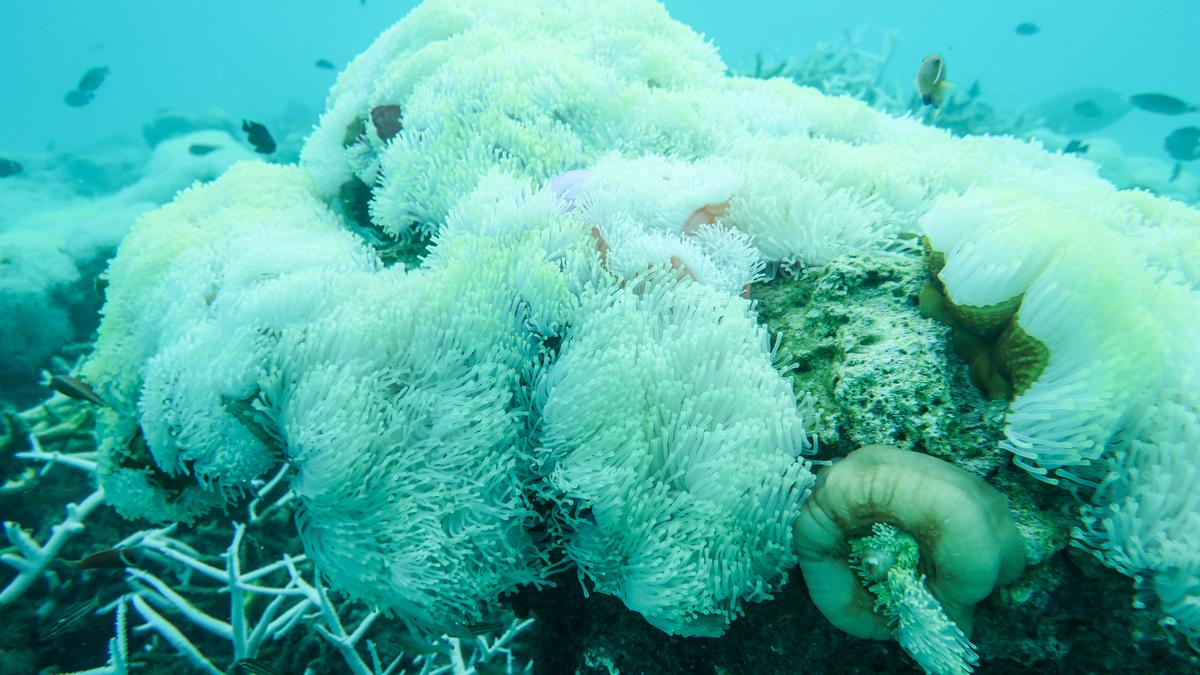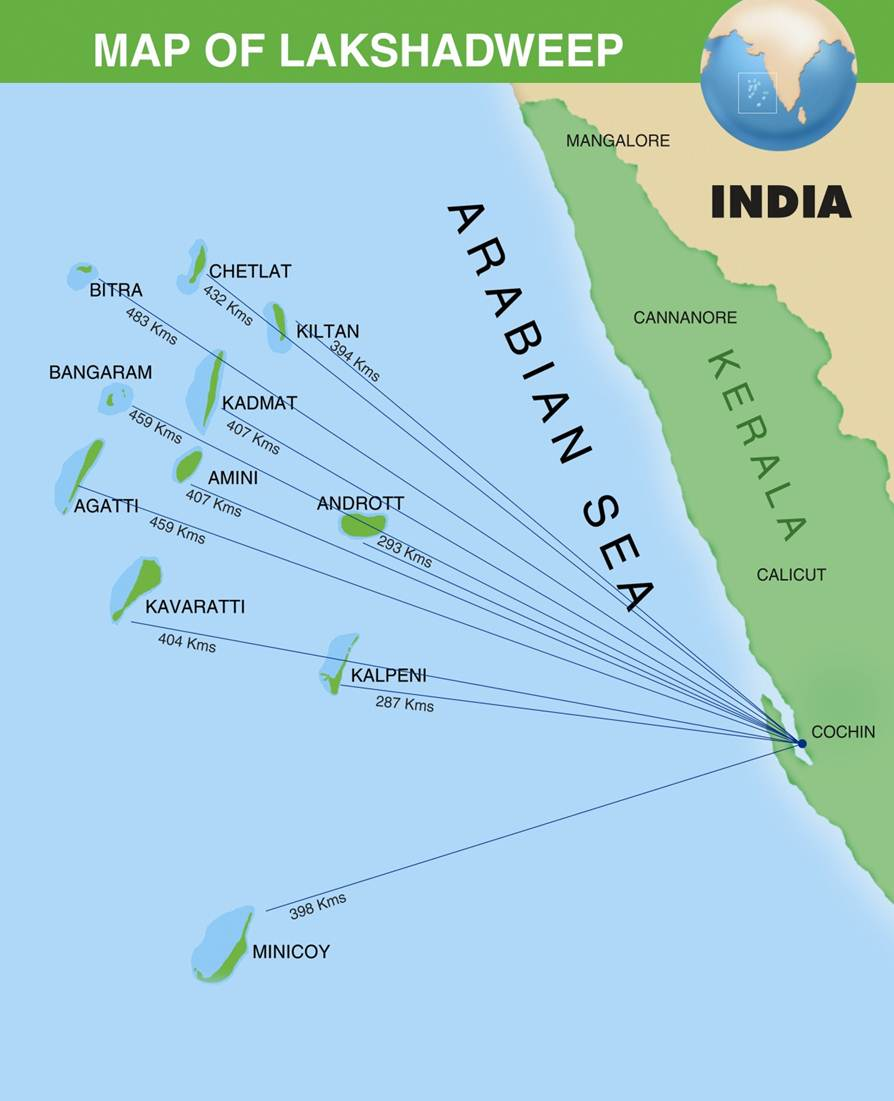Bleaching of Sea Anemone | 20 May 2024
Researchers studying Sea Anemones (Actiniaria) in the Lakshadweep group of islands have observed a large-scale bleaching event among the anemones off Agatti island. Sea anemone bleaching has been observed in Lakshadweep islands for the first time.
- Sea anemone bleaching refers to the process in which sea anemones lose their vibrant colours and turn white or pale due to loss of symbiotic photosynthetic algae from them.
- This can occur due to environmental stressors such as rising water temperatures, pollution, or changes in ocean chemistry.
- Bleaching causes sea anemones to lose their primary source of energy, rendering them more susceptible to diseases and leading to higher mortality rates.
- Sea anemone is an aquatic animal marked by soft bodies and an ability to sting.
- They are part of the Cnidaria phylum family and are found in ocean waters, particularly in coastal tropical areas.
- They are close associates of corals and live rocks. They also form symbiotic bonds with clownfish, providing protection in exchange for food from the clownfish’s meals.
- Sea anemones play vital biogeochemical roles in benthic ecosystems (lowest ecological zone in a water body, and usually involves the sediments at the seafloor).
- Agatti Island is at a distance of 459 km (248 nautical miles) from Kochi (Kerala) and is located to the west of Kavaratti Island.
Read More: Agatti Island of Lakshadweep


